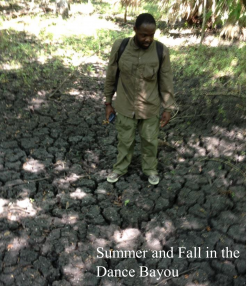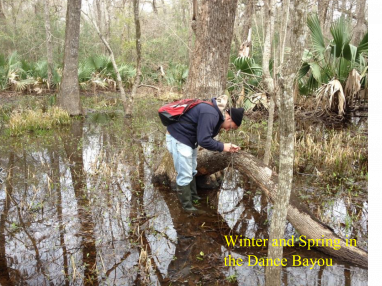Background
The key scientific hypothesis being addressed by this method project is that the pH dependence of B speciation allows for B in paleosol carbonates to be used as a proxy for pore space CO2 concentrations (Sheldon and Tabor, 2009). Such a proxy would allow for the investigation of changes in respiration rates across landscapes and through geologic time, and reduce the uncertainty associated with paleosol-based determinations of atmospheric CO2.
Changes in soil pCO2 strongly modulate soil pH where increases in pCO2 are associated with decreases in pH. Variations in soil pCO2 may be reflected in the distribution of B in soils as both the aqueous speciation (Dickson, 1990) and ion-exchange partitioning (Goldberg and Glaubig, 1986) of B are pH-dependent. This affects the precipitation of calcium carbonate in-situ in modern (Gile et al., 1966) and ancient (Driese et al., 1992) soils. The incorporation of borate ions into growing CaCO3 crystals and the strong pH-dependence of δ11Bborate imply that ancient pedogenic carbonates may be used as a proxy for soil pH and, by extension, pCO in the geologic past in a similar manner to the use of marine carbonate δ11B values as a seawater pH and atmospheric pCO2 proxy (Hemming and Hanson, 1992).
This method project uses four soil carbonate nodules collected from different depths in the Dance Bayou, Texas. At this location in the winter and spring, precipitation is greater than evaporation and the high water contents result in swelling soil that creates an impermeable barrier at the soil surface and ponding of water. This impermeable barrier creates reducing conditions in the soil and high soil pCO2 that results in a low pH. Conversely, in the summer and fall, evaporation is greater than precipitation and the low water contents result in shrinking soil and allows for drainage at the soil surface and oxidizing conditions. As a result, there is low soil pCO2 and higher pH.


Fig. 1: Conditions of the Dance Bayou, Texas, in the summer and fall versus the winter and spring.
Manganese is soluble during reducing conditions and insoluble during oxidizing conditions and is sensitive to cathodoluminescence (CL) imaging, which was done for the four soil carbonate nodules in this project to indicate which parts of each nodule precipitated during reducing and oxidizing conditions. Mintz et al. (2011) also found that the brightest parts of soil carbonate nodules from the Dance Bayou under CL imaging were consistent with higher soil respired CO2 and reducing conditions. Bright and dull regions under CL imaging correspond with bright and dull regions under reflected light, and both images were used to guide mapping. The objective of this method project is to analyze these two different luminosity regions that were formed under reducing and oxidizing conditions and determine trace element regressions (B vs Al, B vs Si) to better understand where to sample B from to advance the development of the proxy.
To approach this scientific question, this method project first sought to use a method presented by Drost et al. (2018) to improve U-Pb geochronology that uses element, element ratio, and isotope ratio maps produced by LA-ICP-MS that are then overlain on photomicrographs or scanning electron microscopy images to spatially link compositional data to textural and structural features. The initial objective of this method project was to use this approach to select and sort pixels in LA-ICP-MS maps of carbonate nodules according to their luminosity under reflected light. However, as the method project progressed, it became clear that this level of precision is unnecessary at this stage of the research because similar luminosities neighbor each other in the Dance Bayou nodules and the structural features of the carbonate nodules are simple enough for region of interest (ROI) and profile tools to be used to group pixels and create a binary comparison of bright and dull regions. In addition, the images of the carbonate nodules were not high enough resolution to resolve fine details in the structure of the nodules. As our understanding of trace element concentrations as a function of luminosity in carbonate nodules continues to develop, and high resolution images of all four carbonate nodules are created, the method presented by Drost et al. (2018) may become an important step in the development of this paleoclimate proxy.